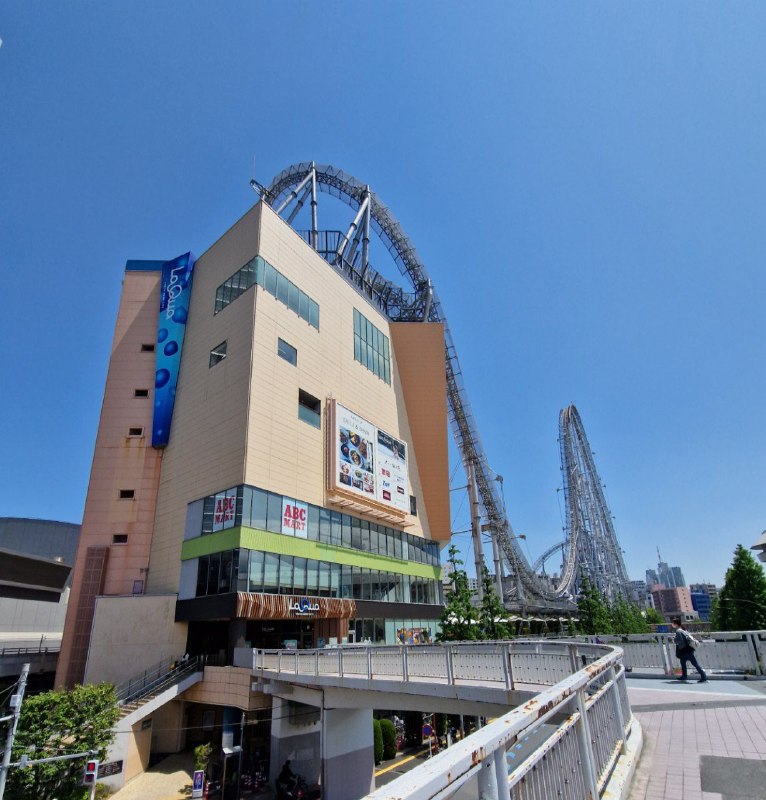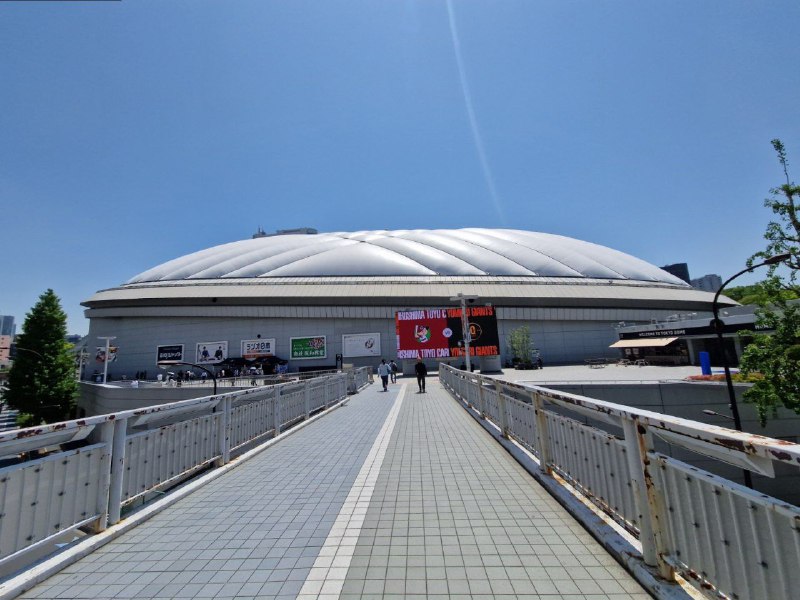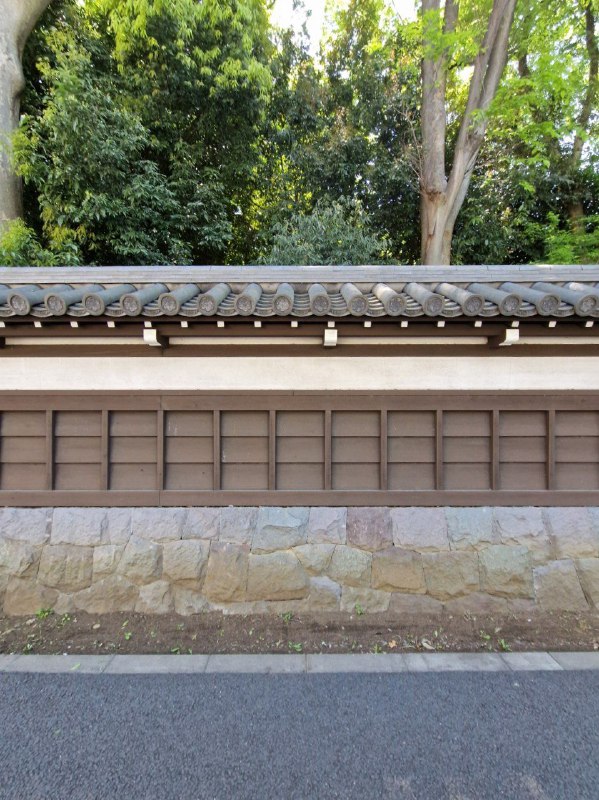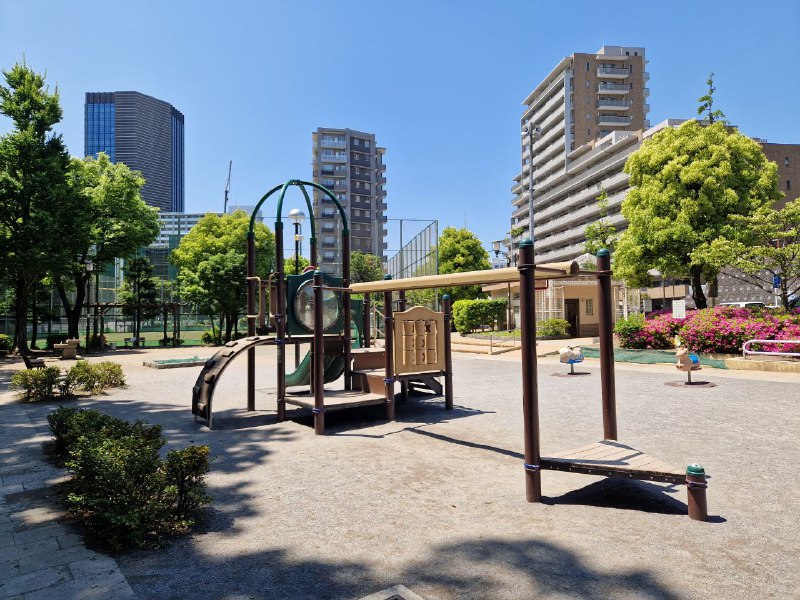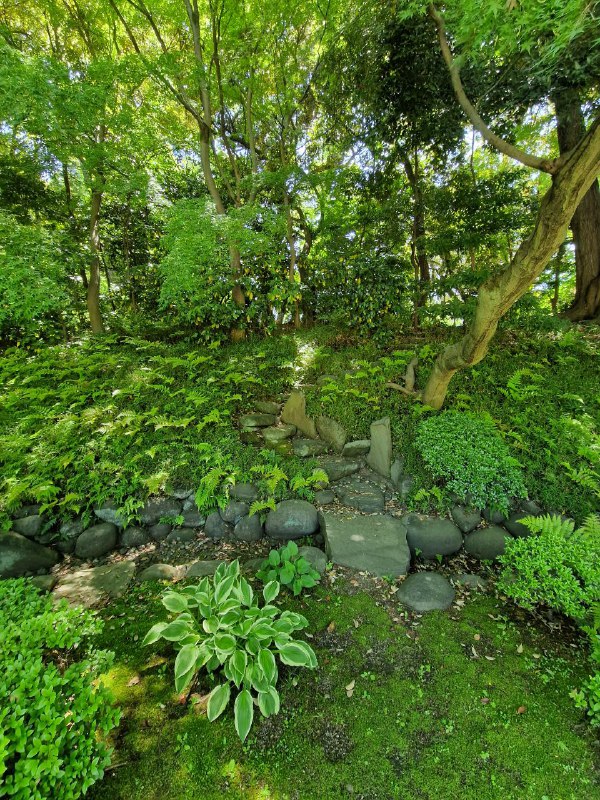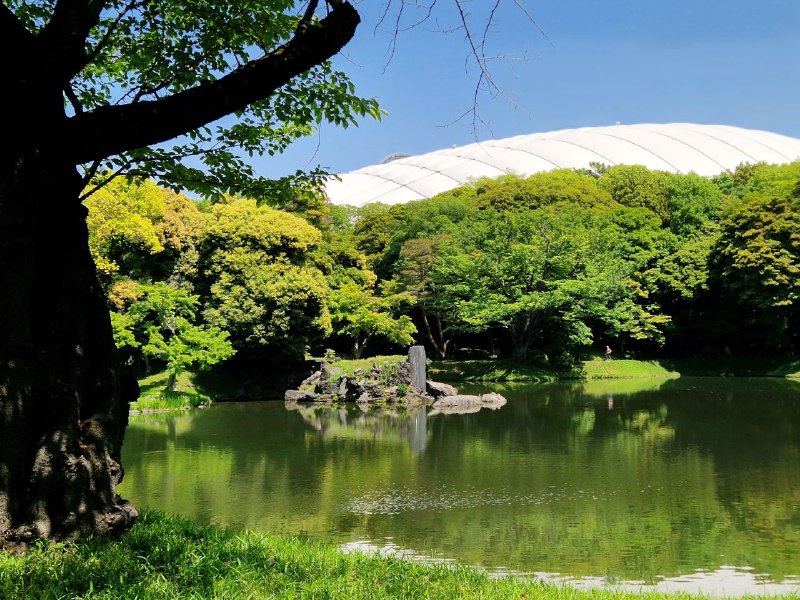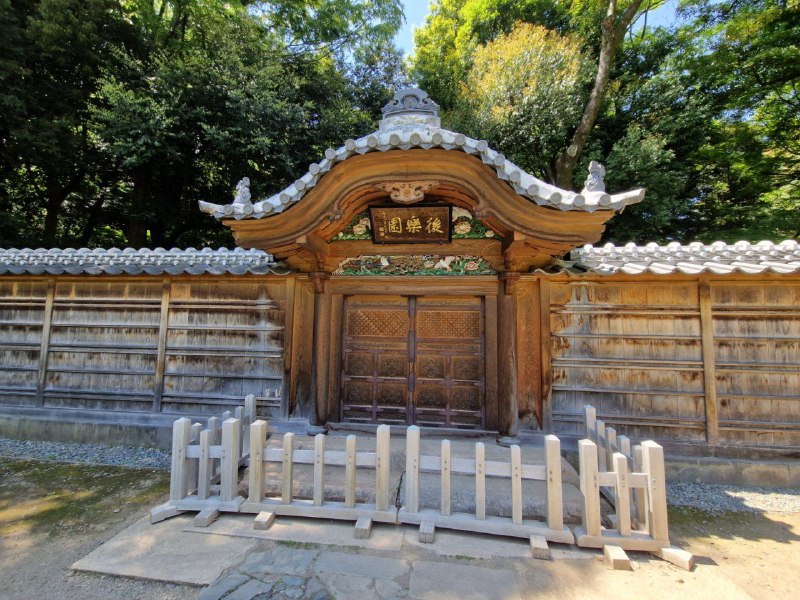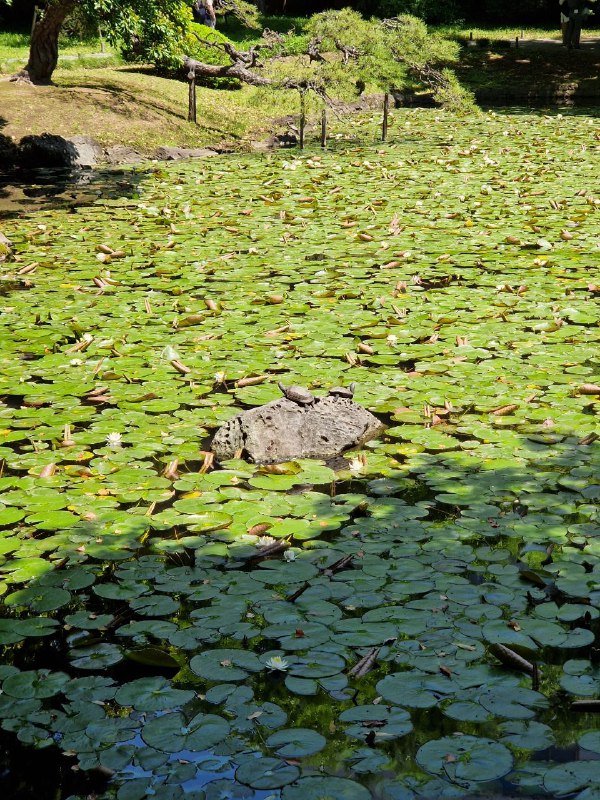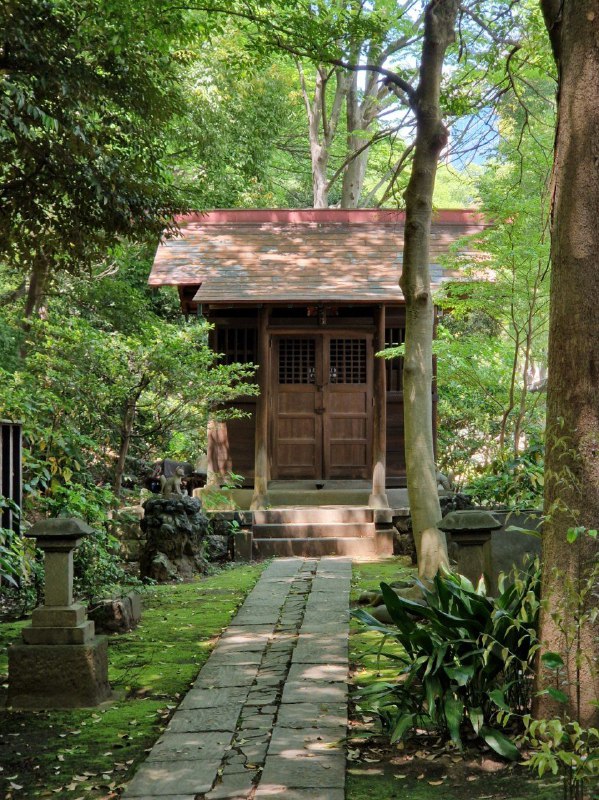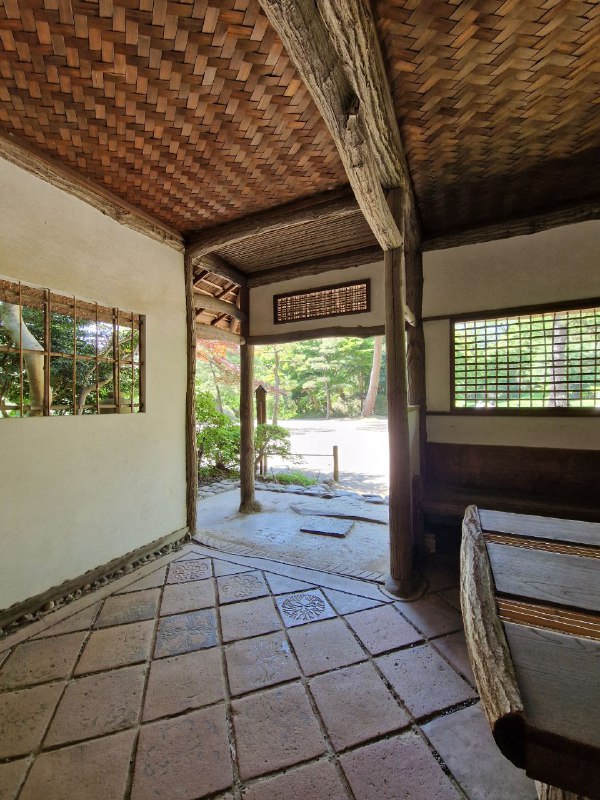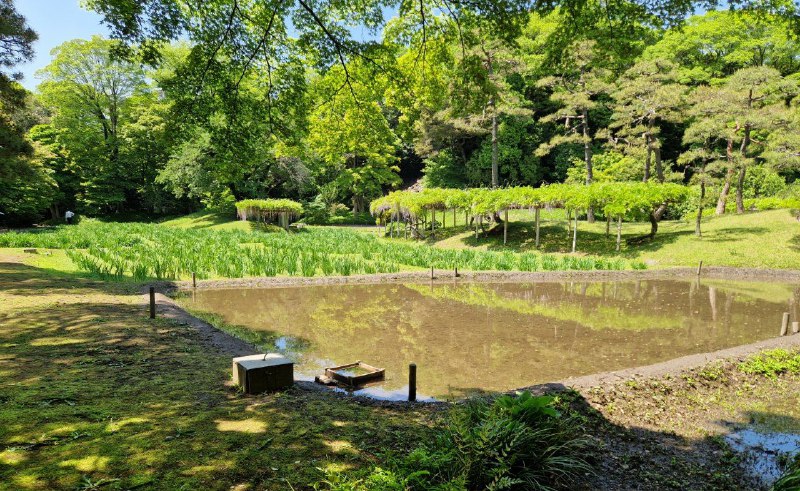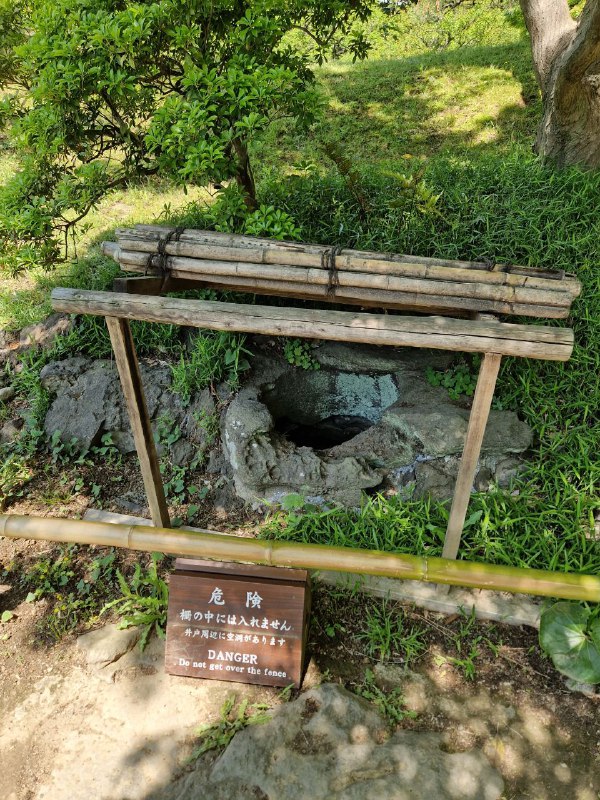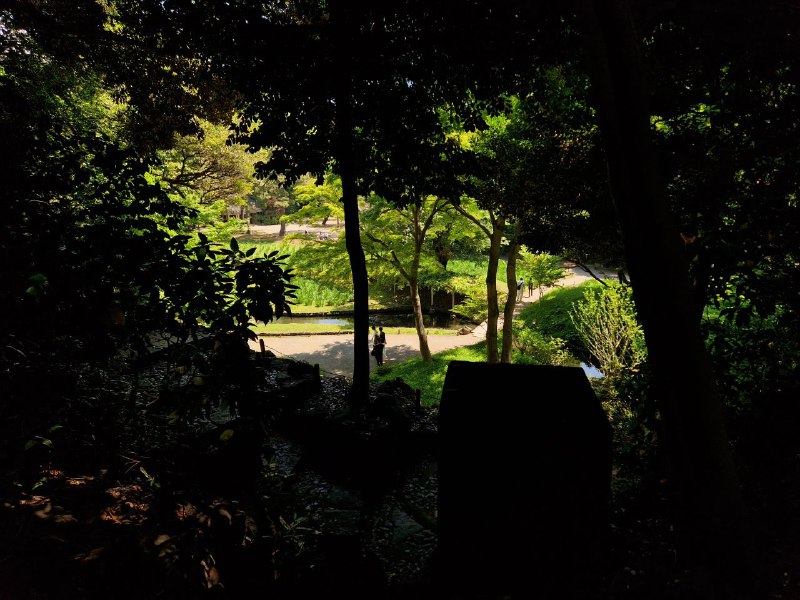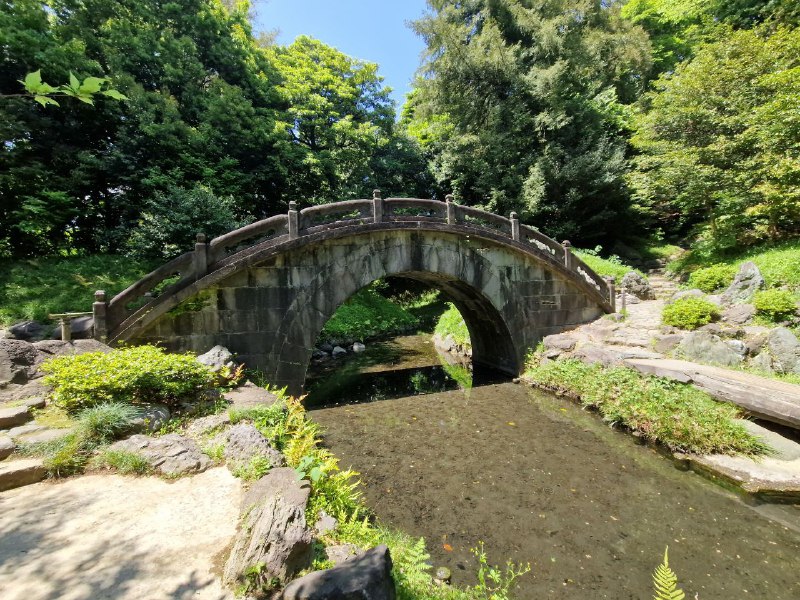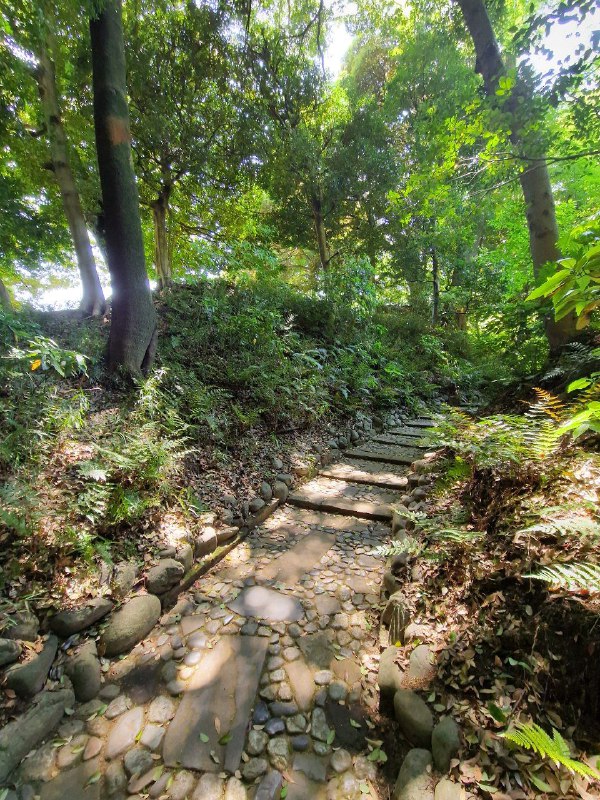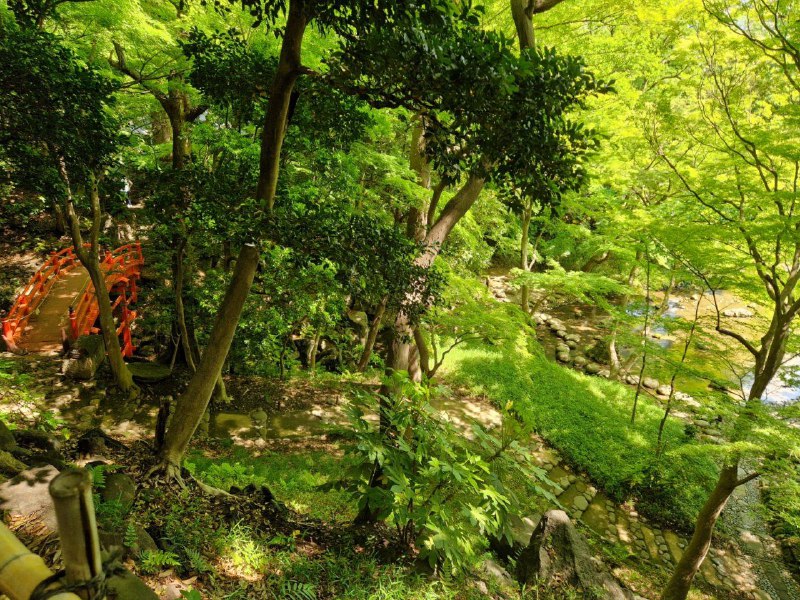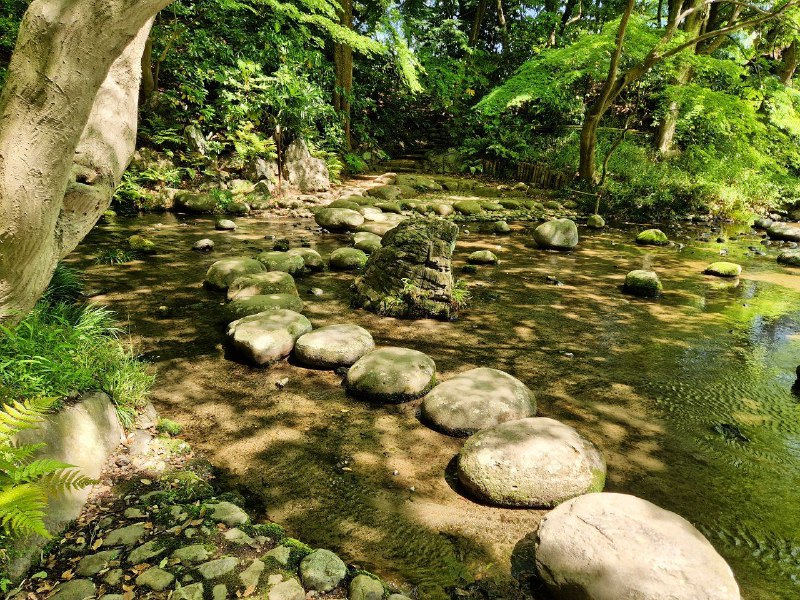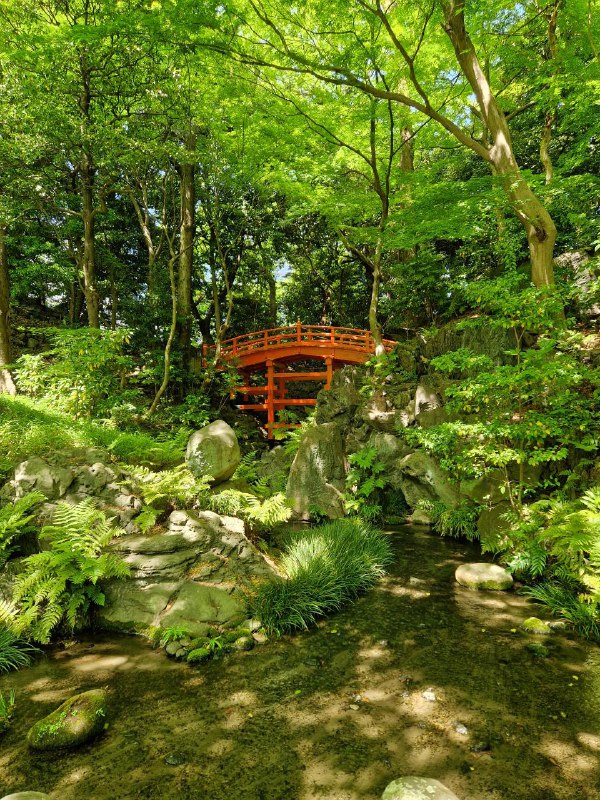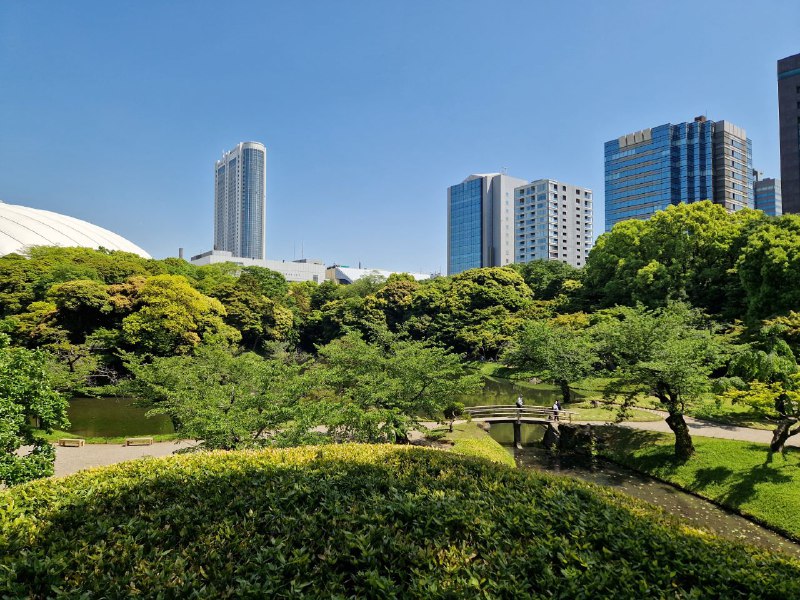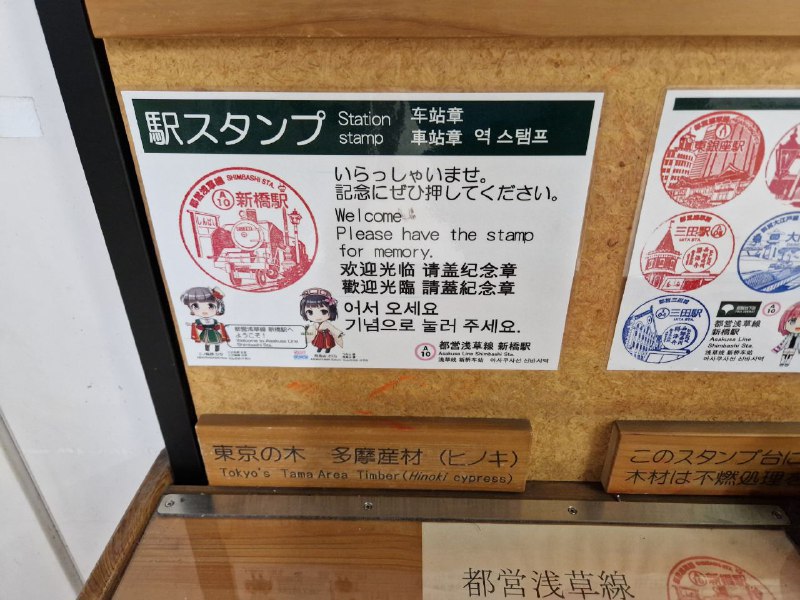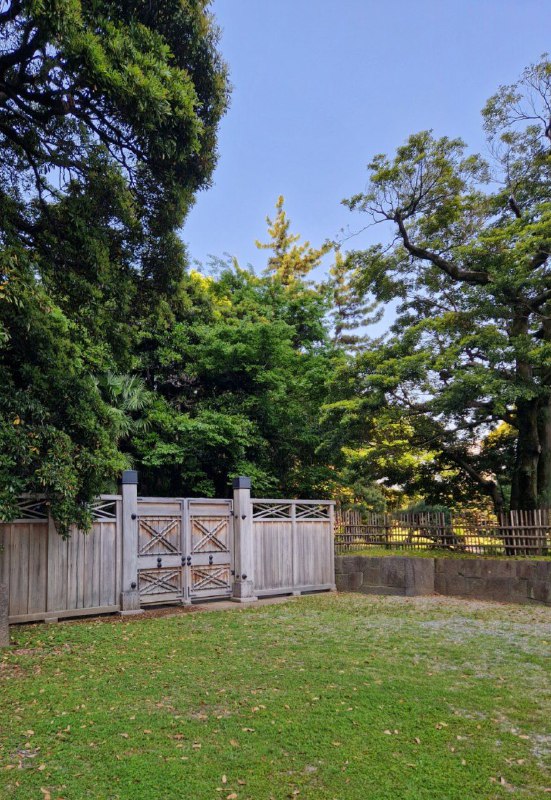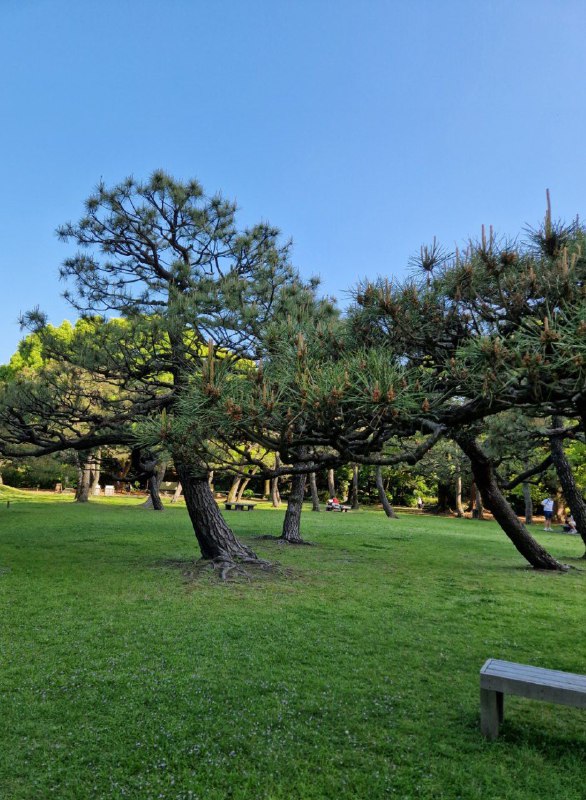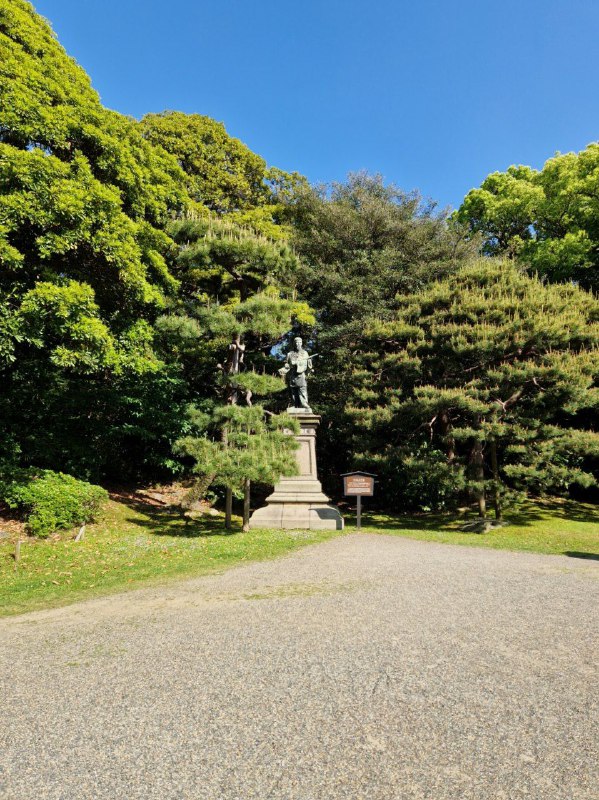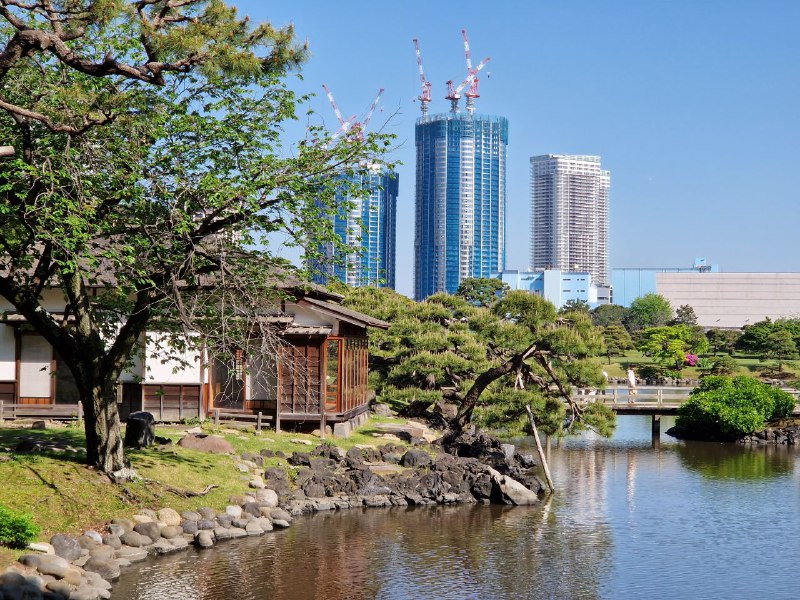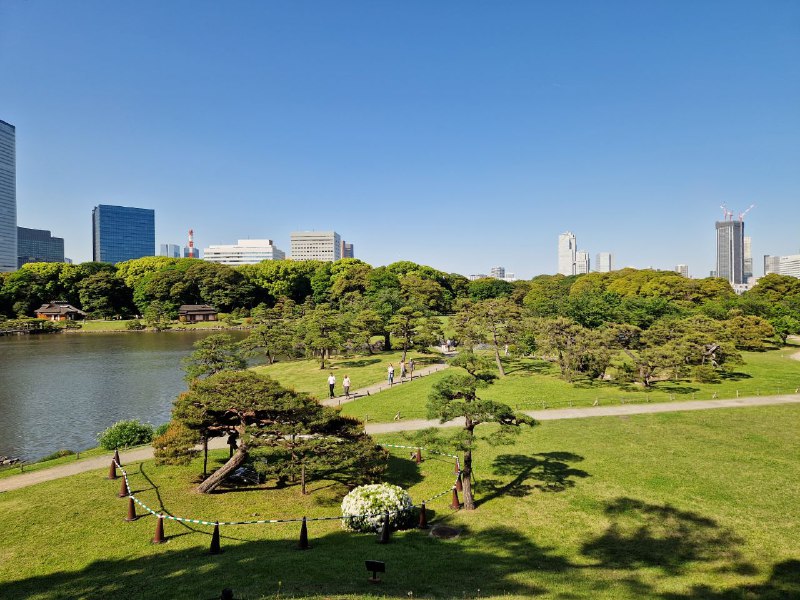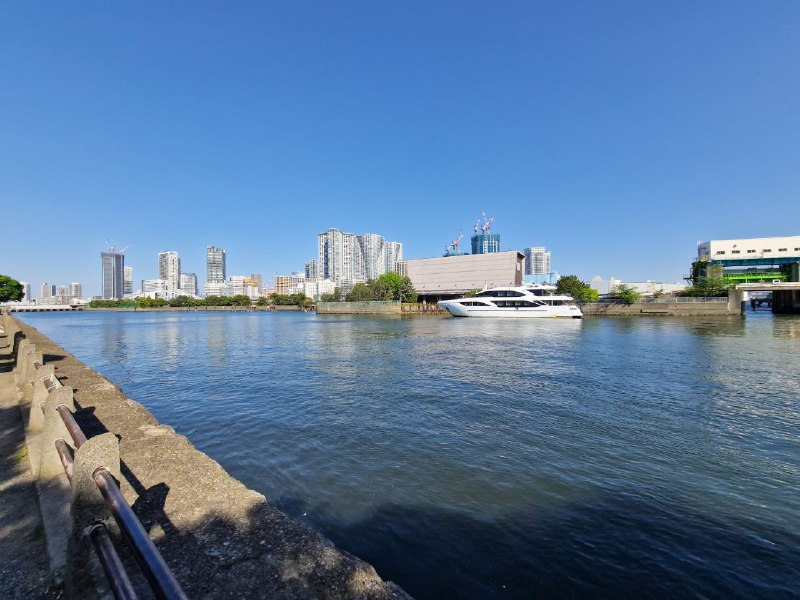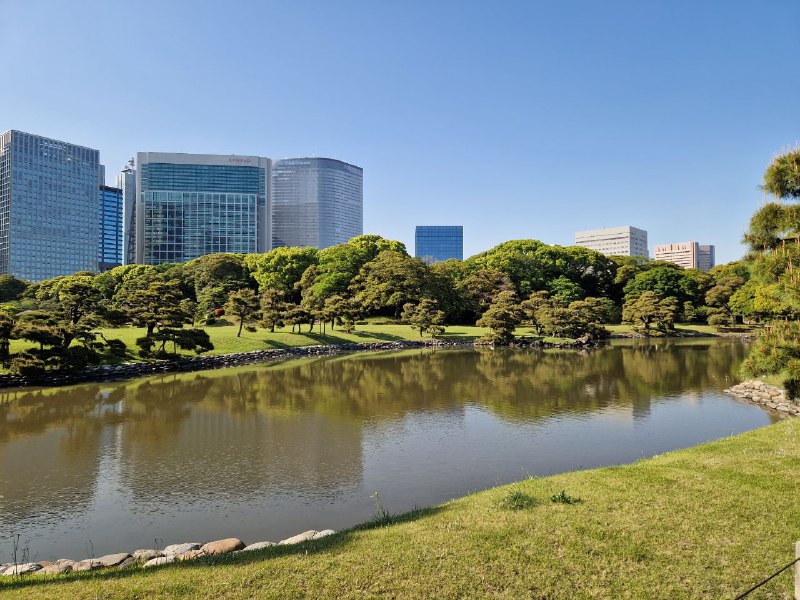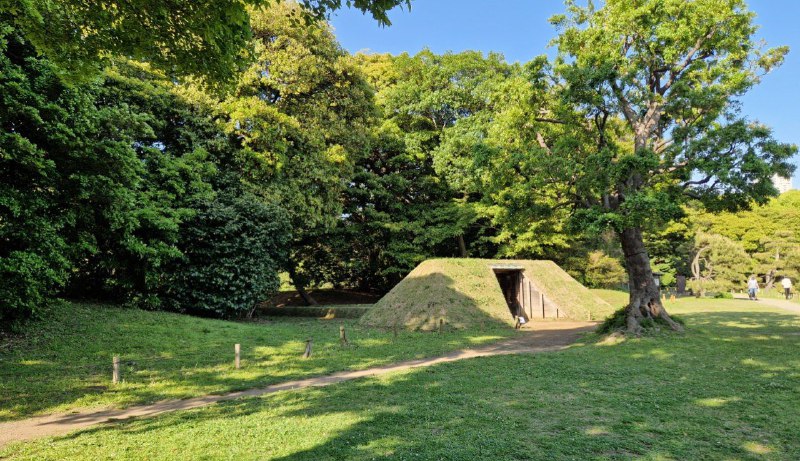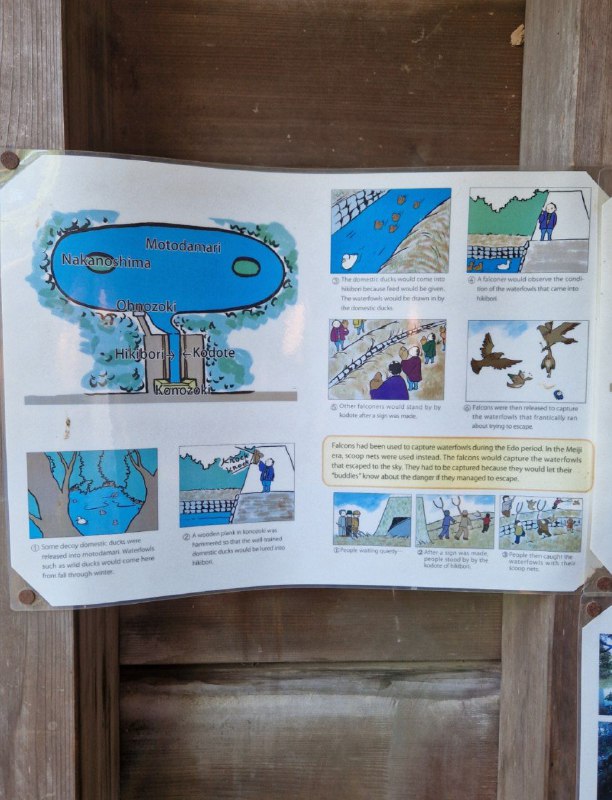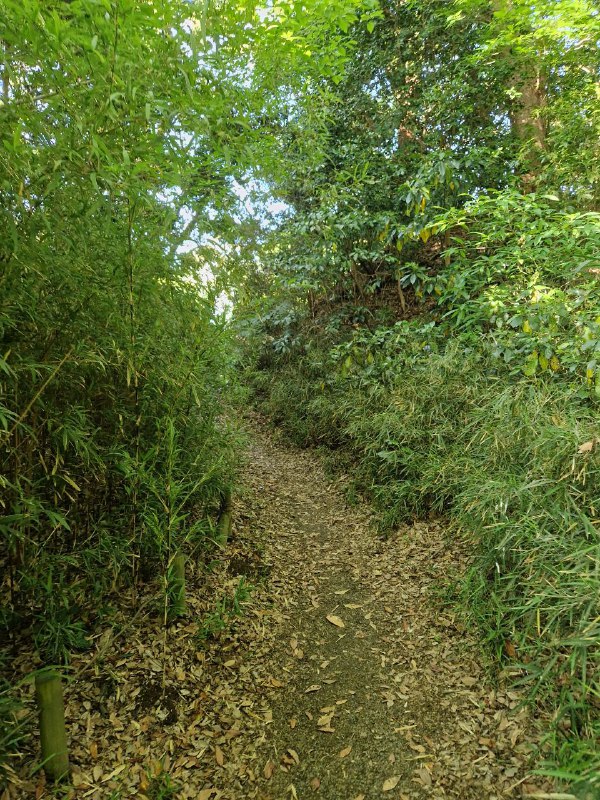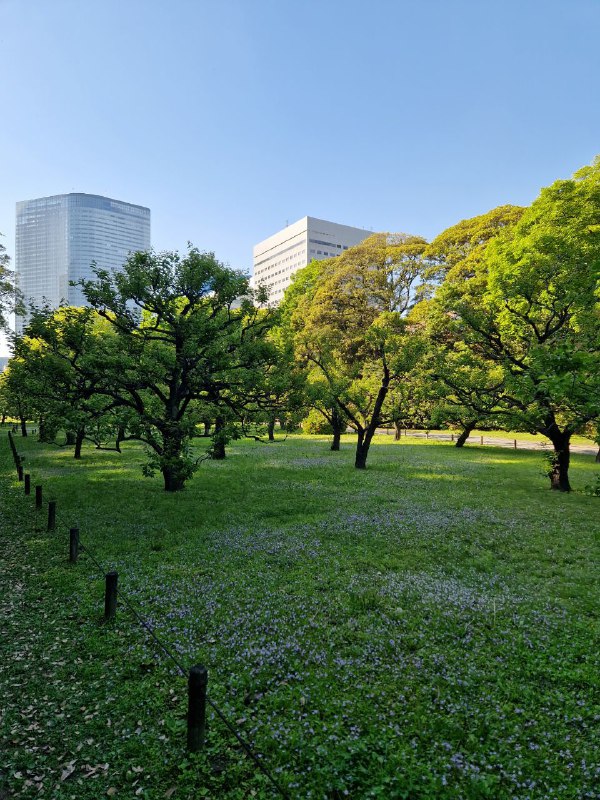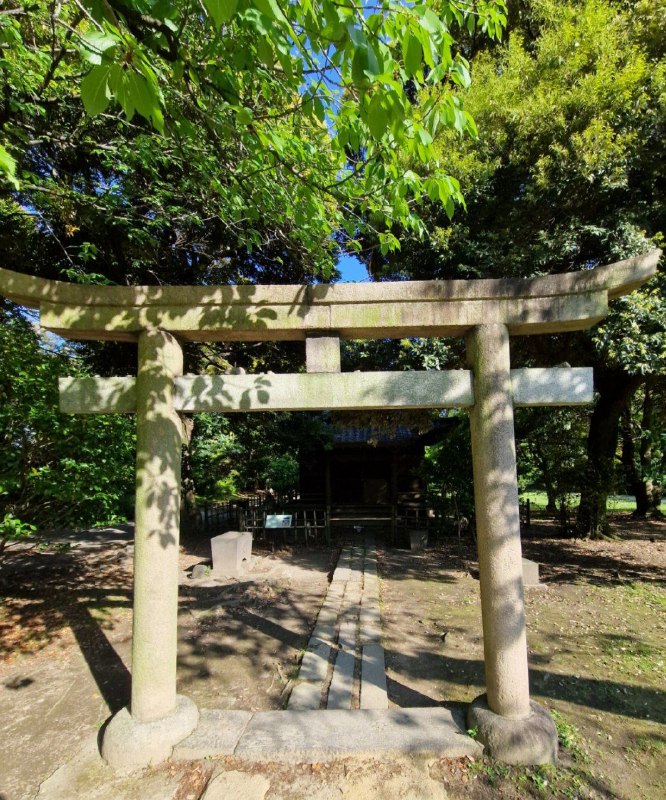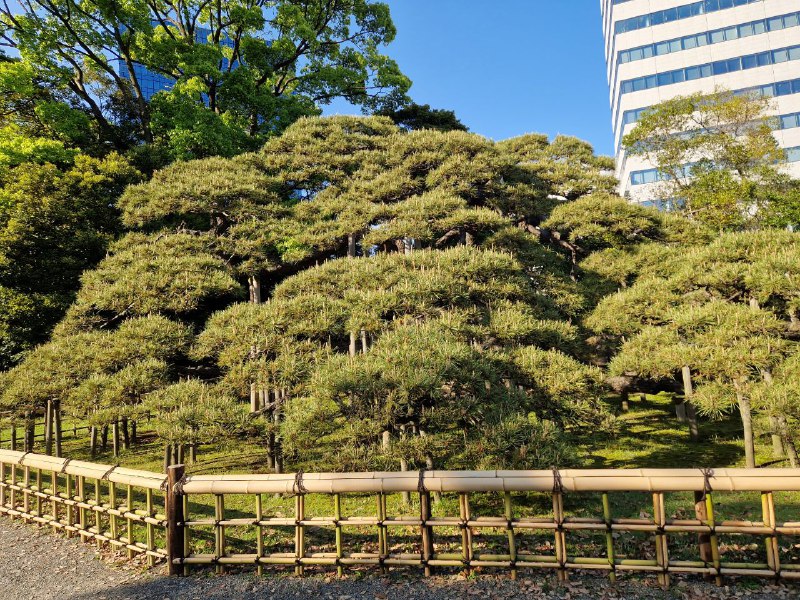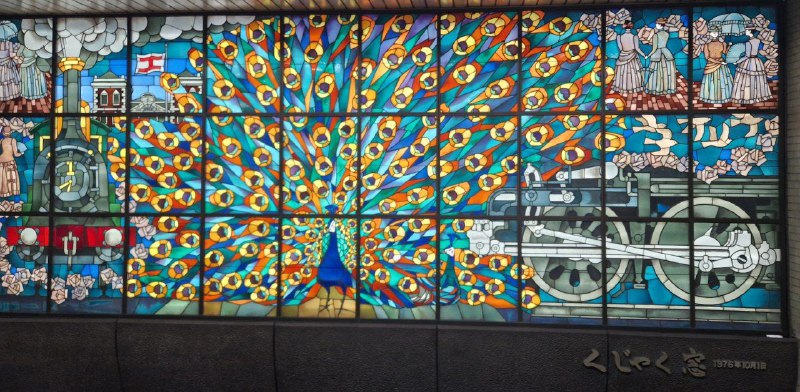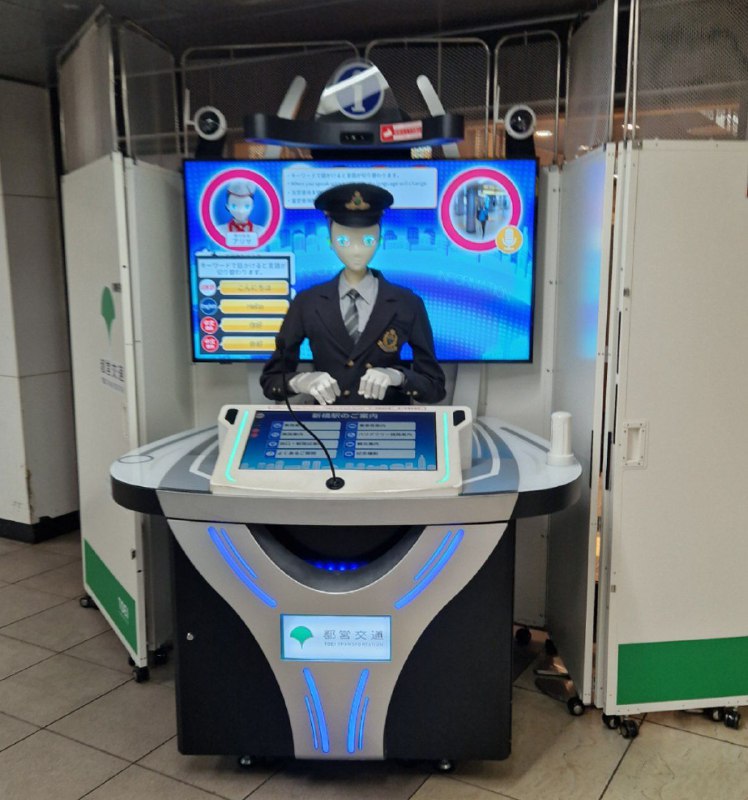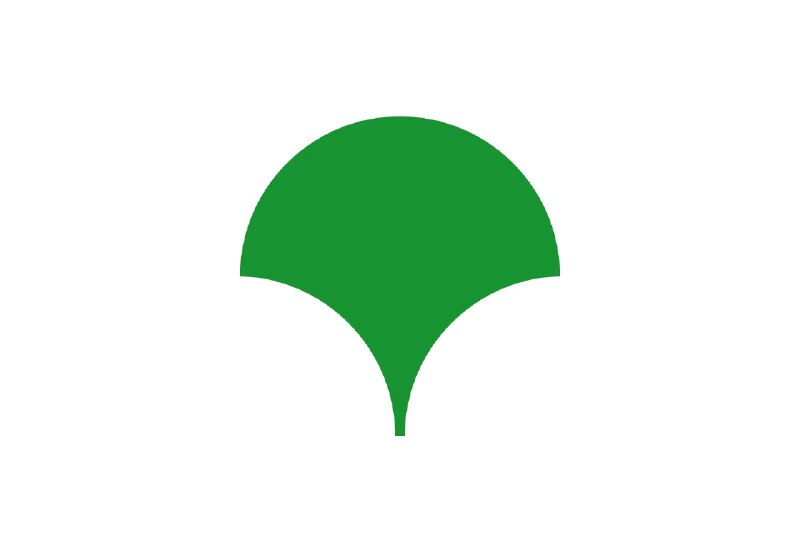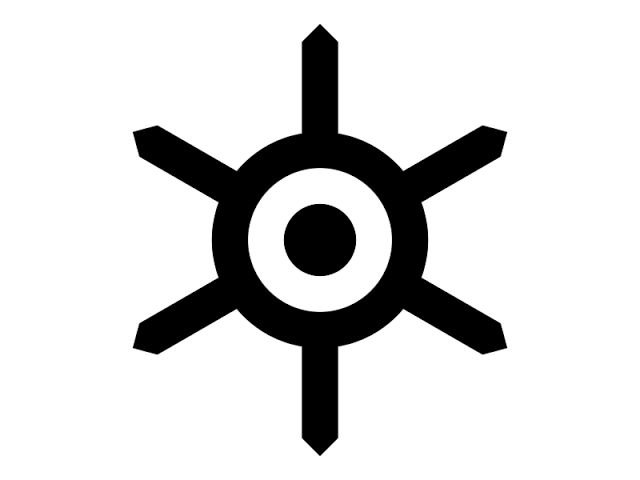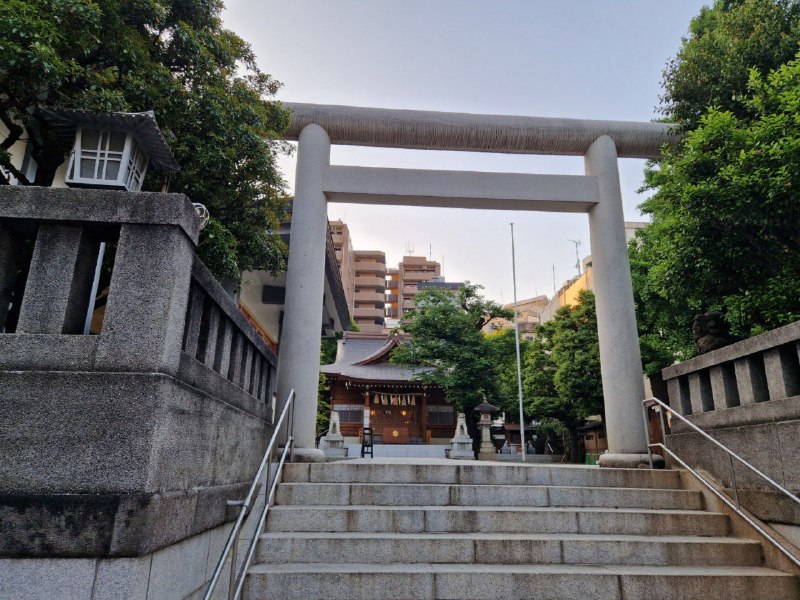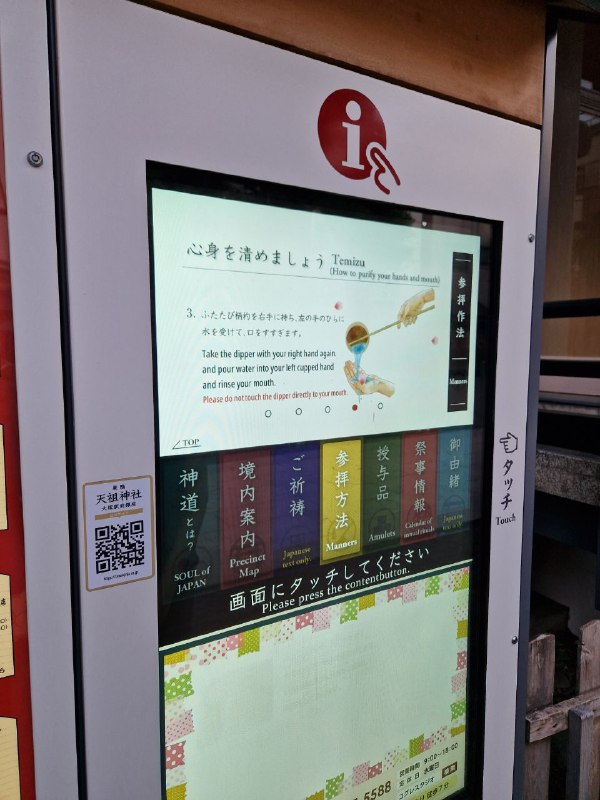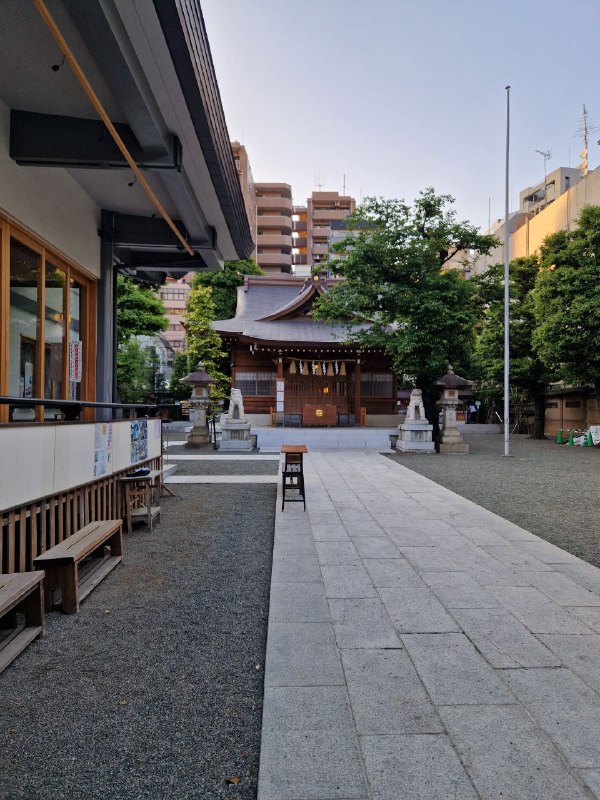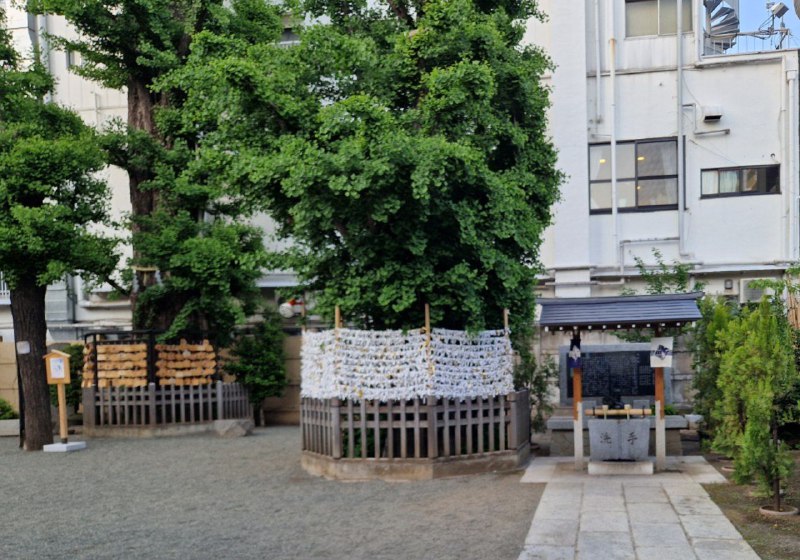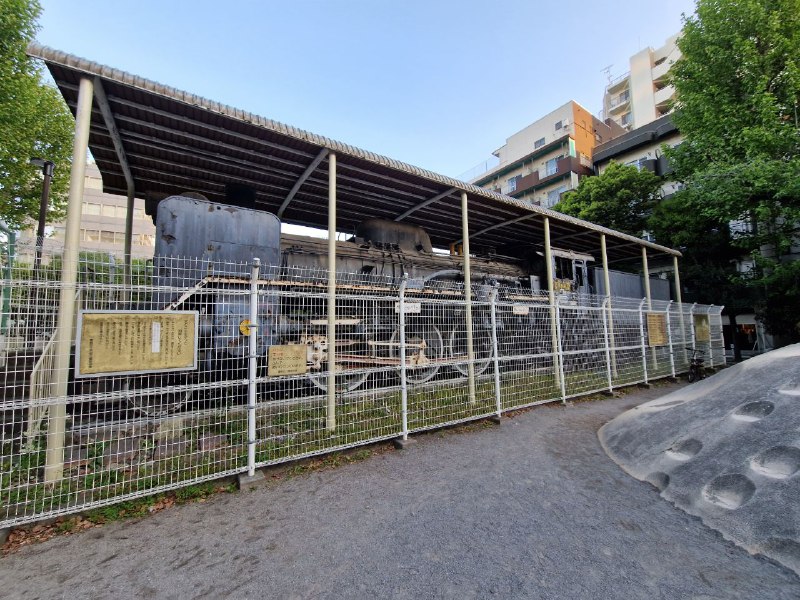Tokyo Dome (a giant baseball stadium) and its amusement park are located next to the station called Korakuen.
That's because Korakuen garden was built here
some 300 years before the Dome, and still exists. This garden is one of
the three surviving Tokyo gardens built by daimyo (lords of the area),
the other two being Rikugien (we've seen it a few days ago) and Hama
Rikyu (the biggest of the three, located next to Ginza area)
The entrance to Korakuen is actually quite far
away from the station! But the walk isn't unpleasant. It's a chance to
enjoy the urban landscape
Korakuen is lush, but its vibes are completely
different from the Rikugien. It was built not for Japanese poetry
appreciation, it was built to reflect on the ideas of Chinese
philosophy.
The garden is welcoming, but its peace is
violated by the views of the Dome and, occasionally, violent screaming
of people enjoying the attraction rides nearby.
Most of the paths are paved with stone in the
Chinese style. Most of the buildings in the garden were destroyed in
earthquakes, fires or air raids, but the ceremonial gates still stand.
Korakuen is anything but showy. It is expensively simple, being a residence of the son of Tokugawa clan.
A small shrine protected by two statues of foxes is completely unassuming. It might be two or three centuries old, who knows
The central building in the park isn't a tea
room, but a replica of an ancient sake shop. There is a tea room outside
of the park, though.
There is a rice paddy next to the sakeya. The
lord of the area has built the paddy to teach his family of the
hardships the farmers under his rule faced. Nowadays the paddy is looked
after by the elementary school next door.
There's a well that is called "the fountain of
youth". It is said that the well never runs dry in the draught and never
overflows in the rain. You can't drink from it.
Korakuen doesn't reveal its secrets easily. You
have to get to know it first... You will not regret taking the road
less travelled
All the roads lead to rivers, though.
The common route is also pretty.
Going off the beaten path is still very, very rewarding.
This is a garden where one must stay mindful of their surroundings. Good luck crossing the river looking at your phone ;)
Korakuen is great. I think I still like Rikugien better, but Korakuen is beautiful and majestic in its own right.
... If only the view of the sky wasn't ruined by the buildings around.
Let's go someplace else! Don't forget to get a stamp from the train station~
Finally, Hama-Rikyuu garden. Built on reclaimed
land over 300 years ago, it was an important residence for the main
Tokugawa clan. Then Meiji owned it and used as a guest house for
important people (for example, a US president stayed here for a month),
but it burned down in the Great Kanto Earthquake, and then again in air
raids of 1945. It was rebuilt and reopened as a public park in 1946.
Hama-Rikyuu is immense; twice as big as
Korakuen and Rikugien combined. Perhaps this is why it has multiple
picnic areas where picnic blankets are allowed?
Hama-Rikyuu doesn't have all that many
spectacular views. One of the biggest attractions is an award winning
statue of the Meiji emperor.
There is a large tea room on an island, but it
isn't serene. The park is surrounded by skyscrapers all around - Ginza,
Tsukishima, and so on. There's active river/sea navigation, too, and the
ship sound signals are annoyingly loud.
There is a small hill called "View of Fuji", but you cannot see Fuji from it. Not in this era, anyways.
Tokyo Bay can be seen from the park. Nothing special
Such a large pond, not a single turtle in sight
The garden has a bit of history preserved: duck hunting grounds
The hunting was overly complicated: fool the ducks, grab them with a net?!
There are nice spots in Hama-rikyuu, like this
bamboo path, or a plum garden, but it's all ridiculously large and
somewhat poorly planned.
There aren't that many flowering things,
either. Not this time of year. The plums and the cherries are all green,
and the flower garden was empty, too.
There is a shrine that has a mini-shrine stored in it.
Perhaps, the nicest part of the garden today
was a 300-year-old pine tree that was planted by the Tokugawa shogun
himself (allegedly).
Time to go home. The train station has a lovely mosaic...
And a super uncanny guidance robot that offers you to take a selfie with it!
Funny thing; the robot is marked with a green ginkgo leaf, it is a symbol of Tokyo Metropolitan area from 1989.
However! It is not the only symbol of the Tokyo
Metropolitan. There is also a crest, used since 1943. It sometimes can
be seen on manhole covers, light poles and so on. As a crest, it doesn't
have a colour, just a shape
The crest is called "monshou", and the symbol is called 🥁 🥁 🥁
....
"shinboru"
....
"shinboru"
It's been some ten days since we've arrived,
and we haven't paid our respects to a single shrine yet! We've seen
plenty shrines that weren't accepting any donations or didn't have any
priests, but we've sort of avoided all the big ones so far.
Tonight we've had half an hour to kill waiting for a coin laundry to do its job, so we decided to check out a small-ish shrine next to the hotel.
Tonight we've had half an hour to kill waiting for a coin laundry to do its job, so we decided to check out a small-ish shrine next to the hotel.
The shrine has a large display with a manual on how to pay respects correctly.
The shrine area has seven shrines, and
enshrines about a dozen of Kami (including a legendary hero Yamato
Takeru, Japanese figure similar to the king Arthur; this is far from the
only shrine for him, though). The shrine is 700 years old, founded in
1321, but it was damaged in the WW2 and only rebuilt in 1960s.
Enas (boards with a wish) and "bad luck"
omikuji (fortune-telling slips) are plentiful. We couldn't buy one,
because we were too late, and the shrine shop was already closed. The
website of the shrine reminded us that being 33 and 37 years old is a
bad luck for women, and we should at least get ourselves protective
amulets. But, again, the shrine shop was closed, and so the bad luck has
to stay with us for a little bit longer, he he.
Bad luck didn't make us wait. We were seated at
the most unauspicious table at the Denny's (44!), and the register
bugged out on our order. Nina has noticed that something is weird, and
had to explain the waiter that 451+2618+836+528+495+693 is 5621 yen, not
9119. 😄
"Huh, it is wrong, isn't it", said the waiter, and fixed it for us.
"Huh, it is wrong, isn't it", said the waiter, and fixed it for us.
A random locomotive. It was built in 1945 in
Osaka, worked hard in Hokkaido for a few decades, until it found its
rest in this small park in 1973. It looks like the locomotive hasn't
been maintained much in the last 50 years, what a shame.
